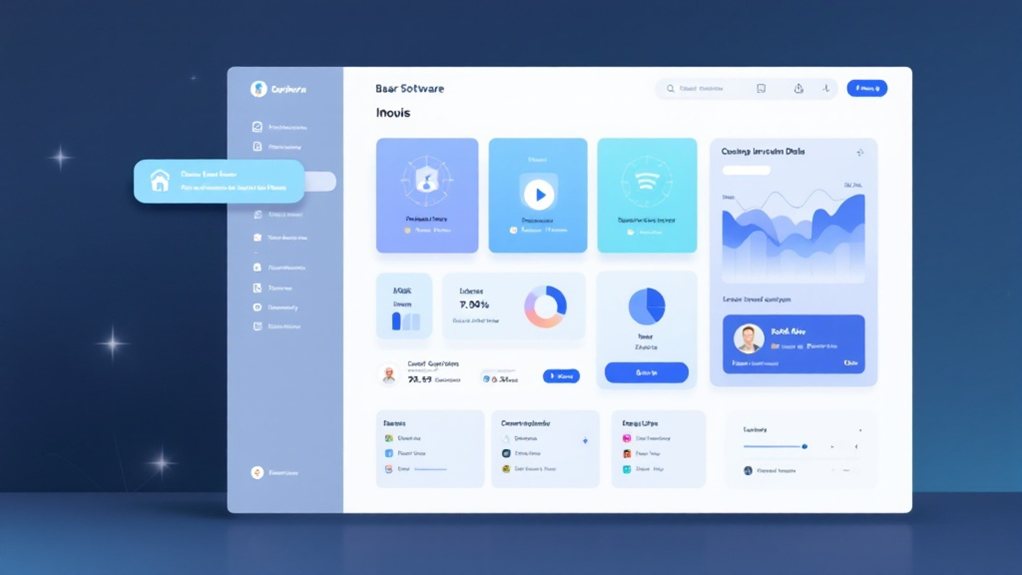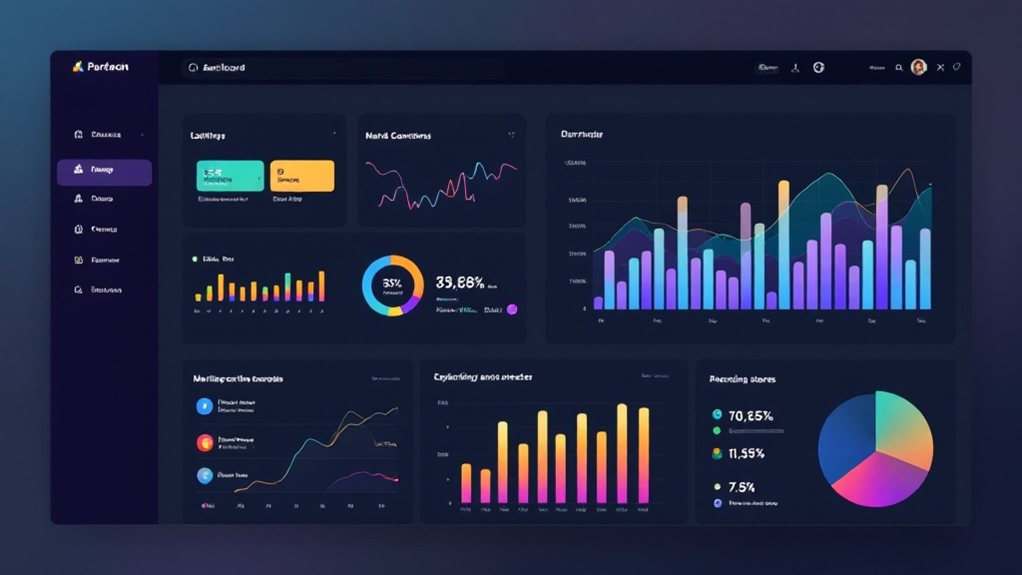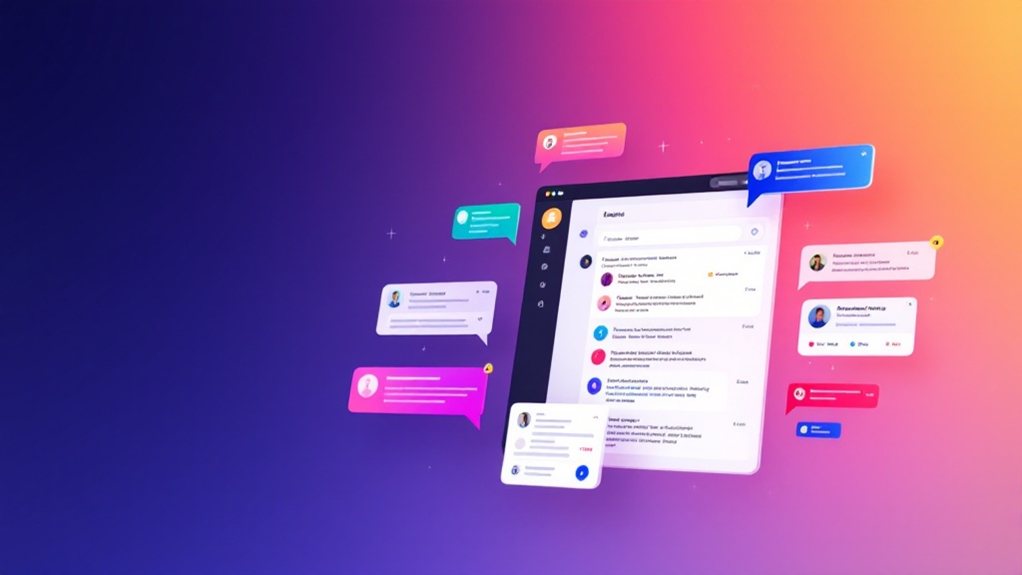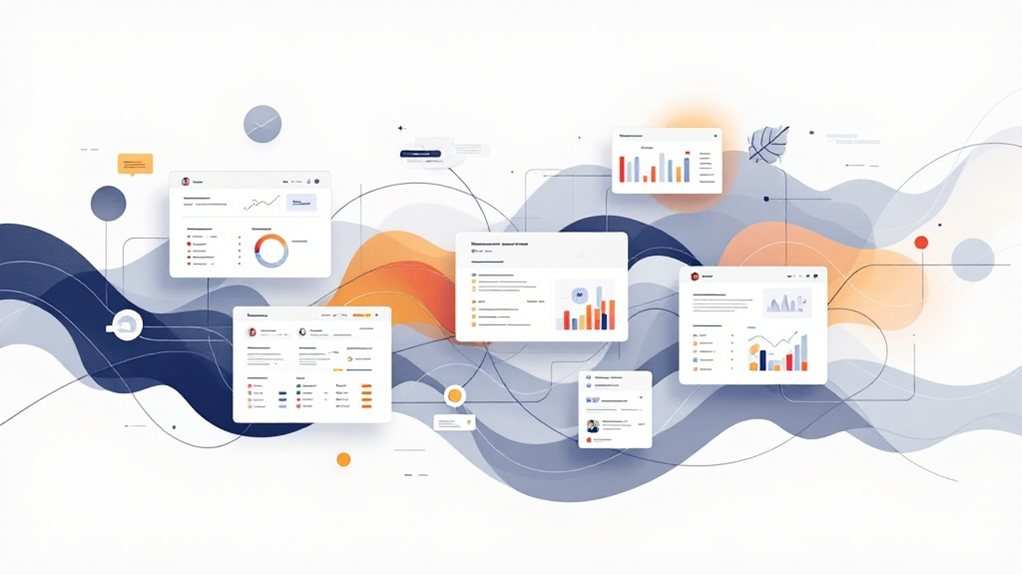Crafting an intuitive UX/UI for your B2B software platform is key. Understand your users' workflows, pain points, and goals. Design with their mental models in mind, using responsive layouts and progressive disclosure. Ensure seamless navigation, accessibility, and contextual guidance. Maintain consistency and predictability to boost productivity. Gather feedback and iterate to meet evolving user needs. By delving deeper, you'll discover how to elevate your B2B software's user experience and drive business success.
Key Takeaways
- Deeply understand the target audience by analyzing their workflows, technical expertise, and usage context to uncover their pain points, goals, and needs.
- Define clear user goals and address their pressing challenges through user research, such as interviews and surveys, to inform the design of an intuitive, user-centric UI.
- Implement responsive and adaptive design with a mobile-first approach, utilizing CSS media queries, flexible grid systems, and progressive web app technologies to ensure a consistent user experience.
- Leverage intuitive navigation and information architecture by organizing content logically, utilizing progressive disclosure, and providing clear visual cues to aid user comprehension.
- Enhance accessibility and inclusivity by embracing universal design principles, optimizing for assistive technologies, and regularly auditing for WCAG compliance to cater to diverse user abilities.
Understanding the Target Audience

When designing a UX/UI for a B2B software platform, it's crucial to first understand your target audience. Who are the end-users? What are their pain points, goals, and needs? Analyze their workflows, technical expertise, and the context in which they'll use the software. This insights will inform your design decisions, ensuring the interface aligns with their mental models and expectations. Don't make assumptions – engage with your users through interviews, usability testing, and data analysis. By deeply understanding your audience, you can craft an intuitive, tailored experience that boosts productivity and user satisfaction.
Defining User Goals and Pain Points
As you dive deeper into understanding your target audience, it's crucial to clearly define their key goals and pain points. What are they trying to achieve with your B2B software platform? What challenges or frustrations do they face in their daily workflows? Identifying these user needs is essential for crafting an intuitive and user-centric design. Consider conducting user research, such as interviews and surveys, to uncover insights directly from your target users. Armed with a deep understanding of their goals and pain points, you can then design a UI that streamlines their processes and addresses their most pressing concerns, ultimately delivering a seamless and satisfying user experience.
Implementing Responsive and Adaptive Design

With the proliferation of devices and screen sizes, implementing a responsive and adaptive design is crucial for your B2B software platform. This approach ensures your users can seamlessly access and interact with your software, whether they're on a desktop, tablet, or smartphone. By adopting a mobile-first mindset, you can create a consistent, intuitive experience that adapts to different viewports. Utilize CSS media queries, flexible grid systems, and responsive typography to optimize your layout and content. Additionally, consider implementing progressive web app (PWA) technologies to enhance the user experience and accessibility, even on low-bandwidth connections. Responsive and adaptive design is a key component of crafting an exceptional UX for your B2B software.
Leveraging Intuitive Navigation and Information Architecture
Intuitive navigation and well-designed information architecture are essential for creating an exceptional user experience within your B2B software platform. Users shouldn't have to struggle to find what they need. Organize your content logically, with a clear hierarchy and intuitive pathways. Leverage progressive disclosure to present information in manageable chunks. Ensure your navigation is consistent, predictable, and easy to scan. Utilize visual cues like icons, labels, and color to aid users' comprehension. Conduct user testing to identify pain points and refine your information architecture. By prioritizing intuitive navigation, you'll empower users to access your platform's full capabilities effortlessly, boosting productivity and satisfaction.
Enhancing Accessibility and Inclusivity

Ensuring your B2B software platform is accessible and inclusive should be a top priority. Embrace universal design principles to create an experience that caters to users with diverse abilities and needs. Optimize navigation, interactions, and content for screen readers, keyboard-only users, and those with motor, cognitive, or visual impairments. Provide clear, intuitive labeling and instructions. Incorporate seamless keyboard shortcuts, text resizing, and color contrast adjustments. Regularly audit for WCAG compliance and gather user feedback to continuously enhance accessibility. Prioritize an inclusive design approach that empowers all users to effectively leverage your platform's capabilities. Inclusive design isn't just the right thing to do – it expands your reach and creates a better experience for everyone.
Optimizing Visual Hierarchy and Branding
Optimizing your B2B software platform's visual hierarchy and branding is key to creating an engaging and user-friendly experience. Ensure your brand identity is consistent and visually appealing across all touchpoints. Prioritize important content and features through strategic placement and sizing, guiding users' attention. Leverage a clean and intuitive layout, with clear visual cues and signifiers. Utilize typography, color, and imagery to enhance the overall aesthetic and communicate your brand's values. Regularly review and refine your platform's design, gathering user feedback to continuously improve the experience. Striking the right balance between form and function will elevate your B2B software and make it more inviting for your target audience.
Streamlining Data Presentation and Visualization

B2B software platforms often overwhelm users with an abundance of data and information. To streamline data presentation and visualization, prioritize only the most essential metrics and insights. Organize data logically, using intuitive layouts and clear labeling. Leverage visual elements like charts, graphs, and icons to make complex information digestible at a glance. Avoid information overload by limiting the number of data points displayed simultaneously. Design for scannable, skimmable interfaces that guide users effortlessly to the data they need. Incorporate interactive features like filtering and drill-down capabilities to empower users to explore data on their own terms. Ultimately, simplify and clarify your data presentation to elevate the user experience.
Integrating Seamless Workflow Processes
While seamless workflow integration is crucial for B2B software platforms, it's equally important to make the process intuitive and straightforward for users. Streamlining workflows by automating repetitive tasks and providing clear navigation can significantly enhance productivity. Ensure that users can easily access and manage all necessary information, documents, and tools within a single, cohesive interface. Incorporate user-friendly features like drag-and-drop functionality, step-by-step wizards, and contextual help to guide users through complex processes. Additionally, offer personalized workflow templates and the ability to customize workflows based on individual needs. By focusing on seamless integration and intuitive design, you can create a B2B software platform that empowers users to work more efficiently and effectively.
Fostering Collaboration and Teamwork Features

Effective collaboration and teamwork features are crucial for driving productivity and fostering a cohesive work environment within your B2B software platform. Incorporate intuitive tools that enable real-time communication, file sharing, and project management. Empower users to seamlessly coordinate tasks, assign responsibilities, and track progress across distributed teams. Foster a sense of community by facilitating group discussions, virtual whiteboards, and shared calendars. Leverage AI-powered assistants to streamline workflows and provide intelligent recommendations. Ultimately, your collaboration features should create a frictionless experience, allowing your users to focus on their core responsibilities and drive successful business outcomes.
Incorporating Contextual Help and Guidance
Providing your users with intuitive contextual help and guidance can significantly enhance their experience and productivity within your B2B software platform. By strategically integrating contextual cues, tooltips, and in-app tutorials, you can ensure your users can effortlessly navigate your platform and quickly find the information they need. This level of support can be particularly beneficial for complex software functionalities, reducing the time and effort required to onboard new users. Remember, your goal is to empower your users, not overwhelm them. Striking the right balance between autonomy and guidance will result in a more satisfied and engaged user base, ultimately driving the success of your B2B software platform.
Ensuring Consistent and Predictable User Experience

Ensuring a consistent and predictable user experience is crucial for the success of your B2B software platform. Users expect a coherent interface that behaves the same way across all touchpoints. Maintain consistent design patterns, color schemes, and terminology throughout your application. This creates a sense of familiarity and trust, reducing cognitive load. Anticipate user needs and provide intuitive navigation, clear feedback, and seamless workflows. Minimize surprises and unexpected behaviors that can confuse or frustrate users. By ensuring a consistent and predictable experience, you'll empower your customers to focus on their tasks, not on learning how to use your software. This foundational element of intuitive UX/UI design will significantly improve user satisfaction and adoption.
Gathering Feedback and Iterating on Improvements
Gathering user feedback is crucial for continuously improving your B2B software platform's user experience. Implement user testing sessions, surveys, and discussions to uncover pain points and gather insights. Analyze the data, identify areas for improvement, and prioritize updates based on user needs. Iterate on the design, implement changes, and validate their effectiveness through further user testing. Encourage an open feedback loop, making it easy for users to share their thoughts. Respond to feedback promptly, demonstrating your commitment to enhancing the experience. Regularly review user analytics to spot trends and optimize the platform. This iterative process ensures your B2B software remains intuitive and user-centric.
Embracing Emerging UX/UI Trends and Technologies

As the digital landscape continues to evolve, keeping pace with emerging UX/UI trends and technologies is paramount for B2B software platforms. From voice interfaces and augmented reality to machine learning-powered personalization, embracing cutting-edge innovations can elevate the user experience and set your platform apart. Leverage progressive web apps for seamless cross-device functionality, and explore how conversational UI can streamline workflows. Stay attuned to shifts in user behavior and preferences, adapting your design approach accordingly. By proactively incorporating relevant trends, you'll future-proof your platform and deliver the intuitive, engaging experiences today's B2B users demand.

